Welcome to Moda Fabrics!
The Welsh Quilt Centre
The Welsh Quilt Centre
Need a breather between one holiday and the next? Take a virtual visit to the Welsh Quilt Centre. 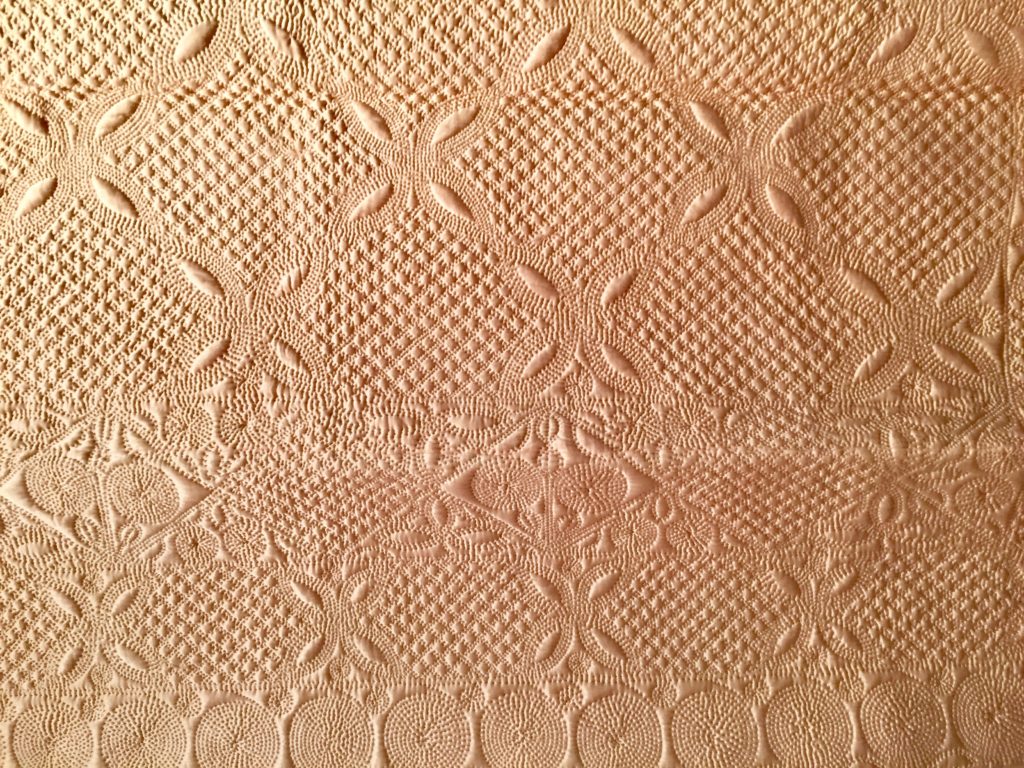
Last October I had the good fortune to visit some dear friends in Hereford, England. They suggested a hiking trip to Tenby, Wales, and having no idea of the distances between things I asked if we could also drop by the Welsh Quilt Centre in Lampeter.
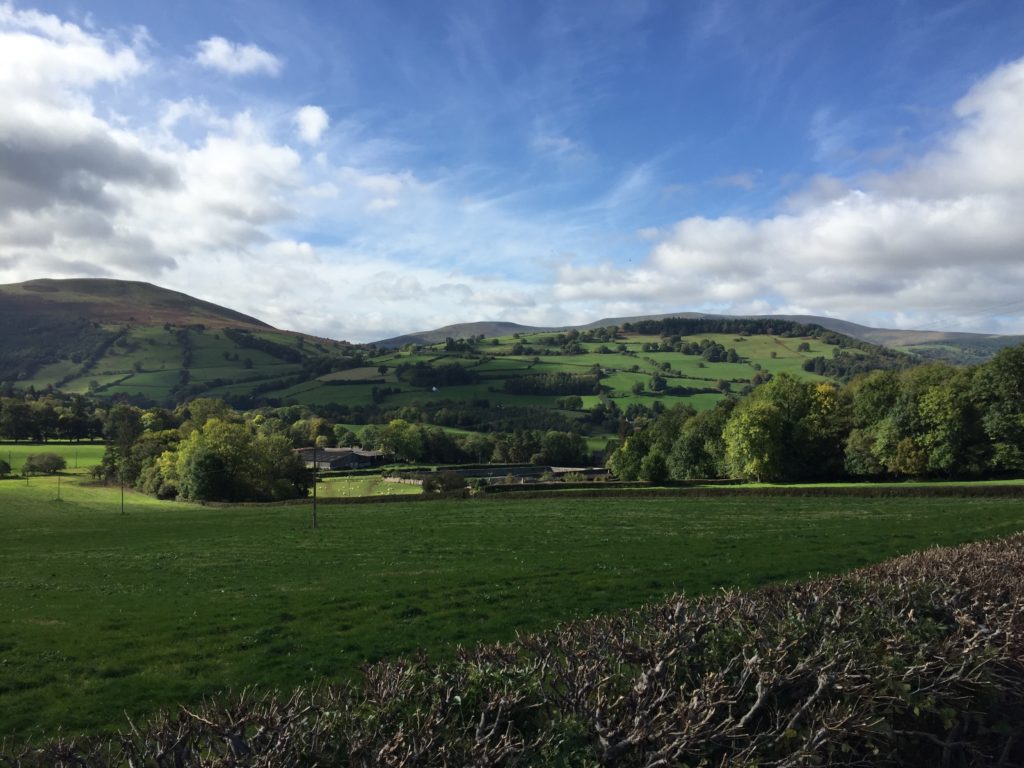 On the road to Lampeter
On the road to Lampeter
Good friends that they are they said “Of course!” and after a four-hour drive on winding, two-lane roads we arrived in the charming town of Lampeter. The Welsh Quilt Centre sits regally on the high street (AKA the main street) in Lampeter's historic town hall.
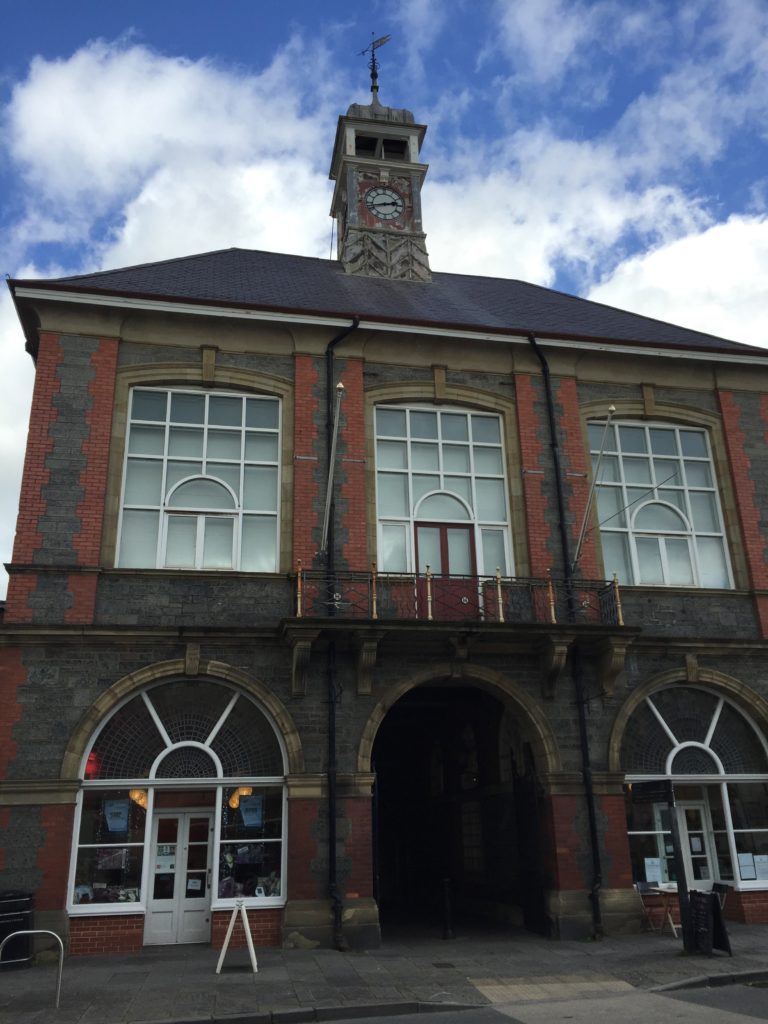 Welsh Quilt Centre—museum and shop to the left, café to the right
Welsh Quilt Centre—museum and shop to the left, café to the right
The museum was founded by Welsh quilt collector and historian Jen Jones in 2009, and officially opened by The Prince of Wales and Duchess of Cornwall in 2010. Jones came to Wales from New England in 1971, at a time when the Welsh weaving and quilting traditions were at a standstill. Through her writing, speaking engagements, and activities within her shop and the Welsh Quilt Museum, she’s helped spread the word and revive appreciation for these textile tradtions. In addition to the museum there is a lovely café and a terrific shop selling vintage Welsh quilts and blankets along with books, gifts, and items by contemporary textile artists and craftspeople. But it was the exhibition, As Good As It Gets, which most excited our group—even the non-quilters loved it.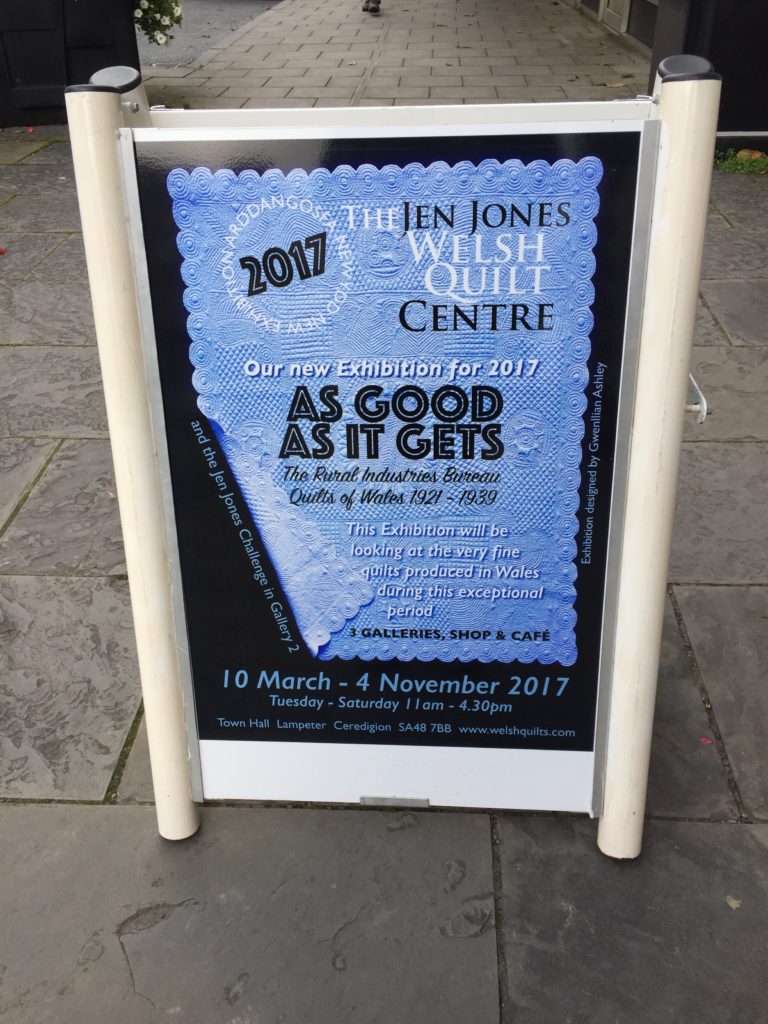
All but one of the quilts on display were whole cloth quilts and most were stitched as part of an initiative by the Rural Industries Bureau of Wales in the late 1920s through 1939. Wales was economically depressed and quilting was one way for women to add to the income earned by their husbands, fathers, and brothers in Welsh mines.
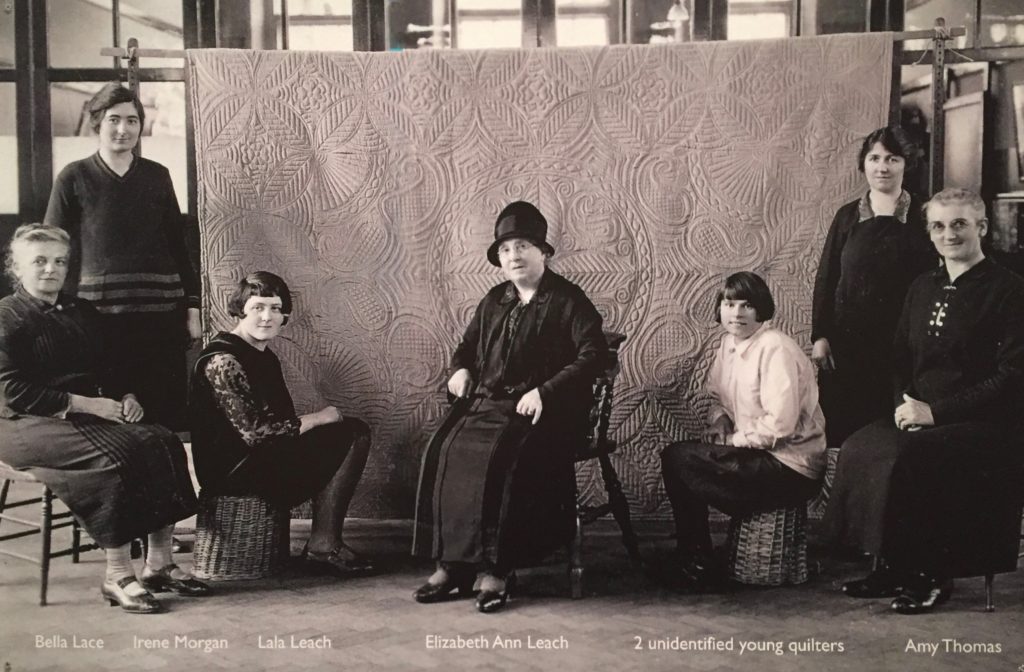 Welsh quilt teachers and institute leaders
Welsh quilt teachers and institute leaders
The Institute set up classes to teach quilting to women throughout the country— the teachers were mostly Welsh quilters who learned their skills from their mothers and grandmothers. An exhibition of the Welsh quilts in London in 1929 drew tremendous interest and orders for the quilts came from individuals, the very posh Claridge’s Hotel, and even the Royal Family. It wasn’t only quilts that were in demand—table runners, cushions, bathrobes, and even hot water bottle covers were stitched and sold, too.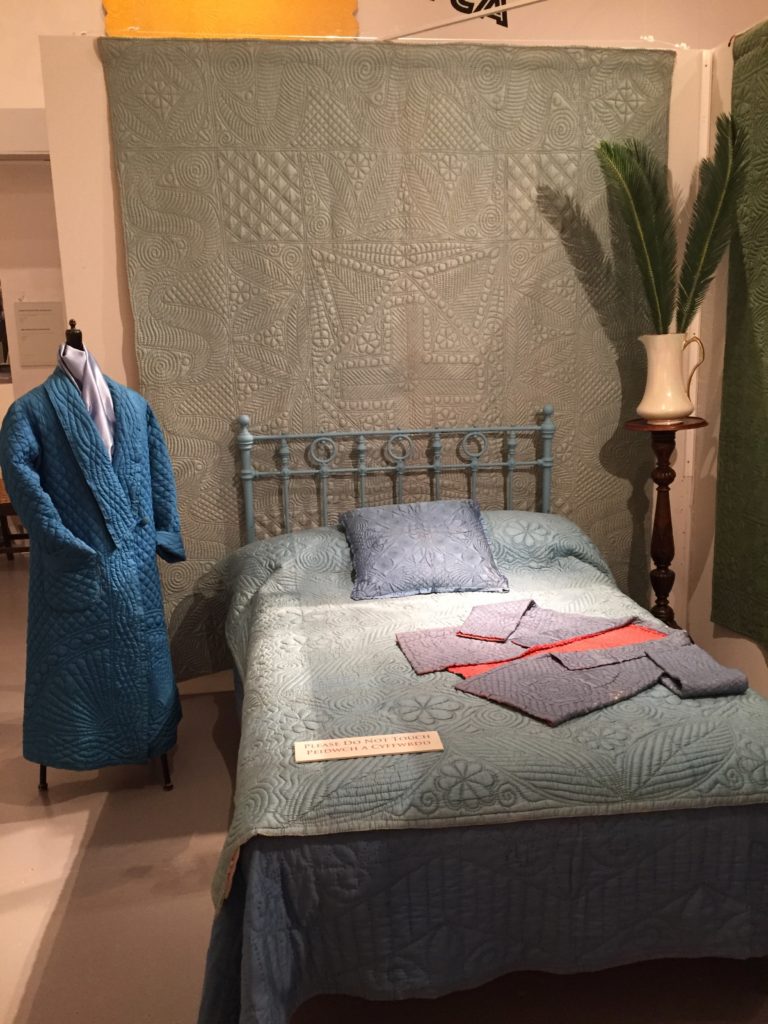
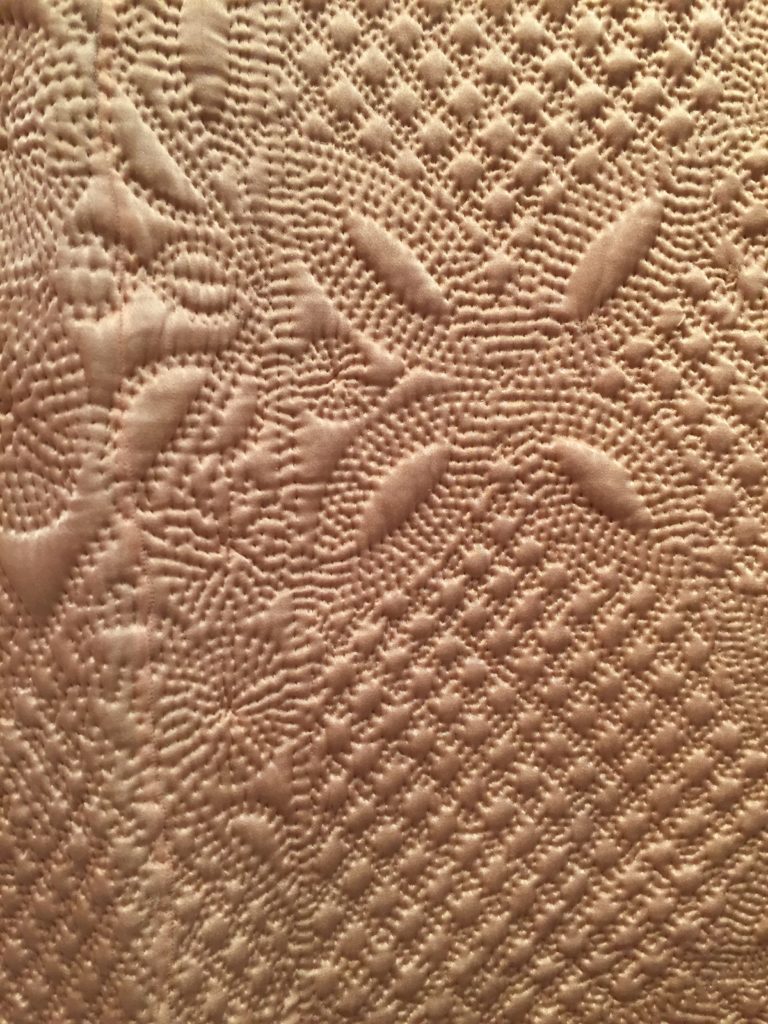 Detail of Peach and Blue quilt
Detail of Peach and Blue quilt
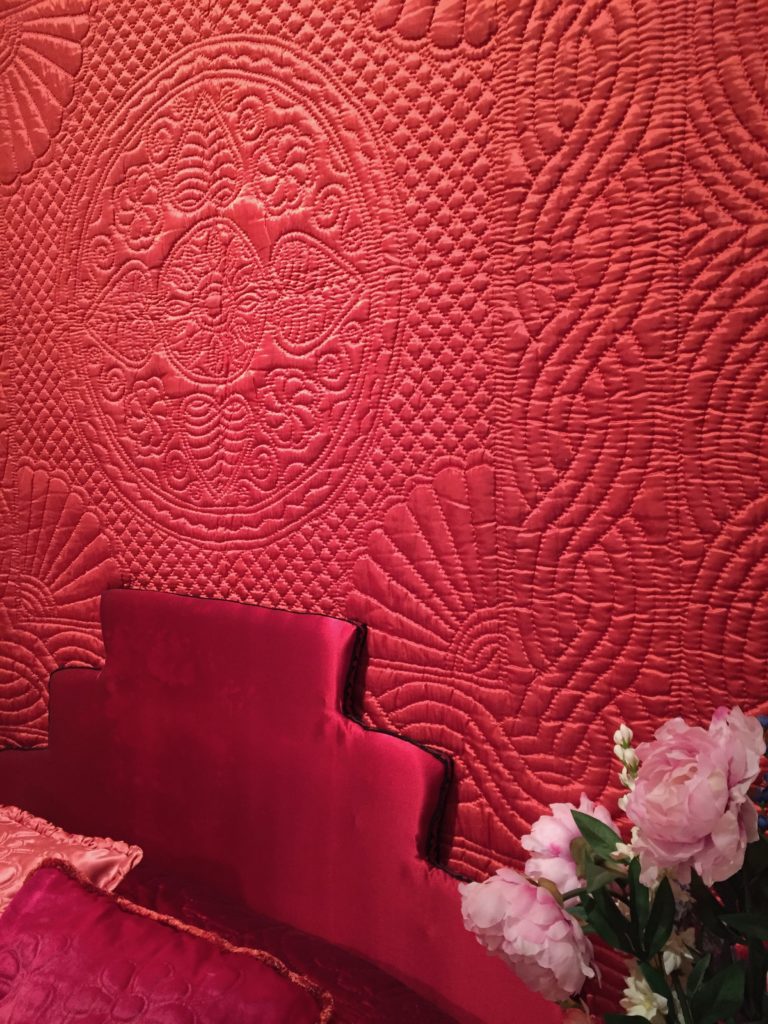 Brilliant Pink Sateen Quilt stitched by a class in the 1930s
Brilliant Pink Sateen Quilt stitched by a class in the 1930s
Fabrics used included silk, satin, and taffeta, and more, and while the fabrics were selected by customers and the quilting reflects the design sensibility of the times, some freedom was given to quilters to stitch patterns distinctive to their region and tradition.
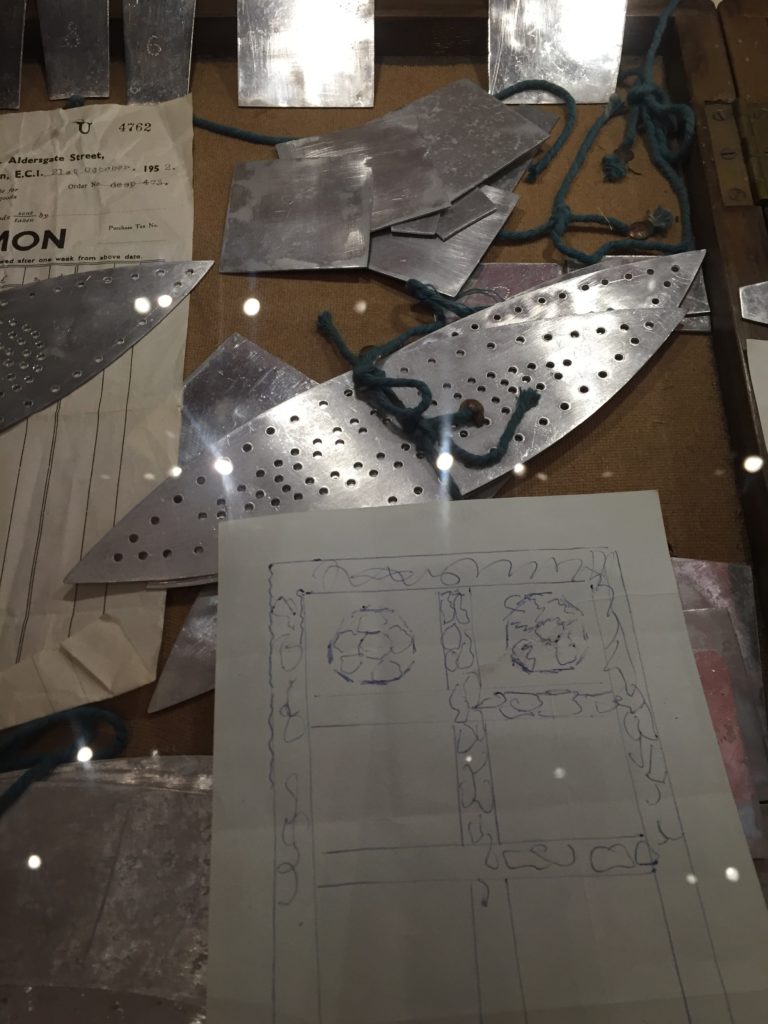 Metal templates made by a husband of a quilter to help his wife with a double wedding ring quilt.
Metal templates made by a husband of a quilter to help his wife with a double wedding ring quilt.
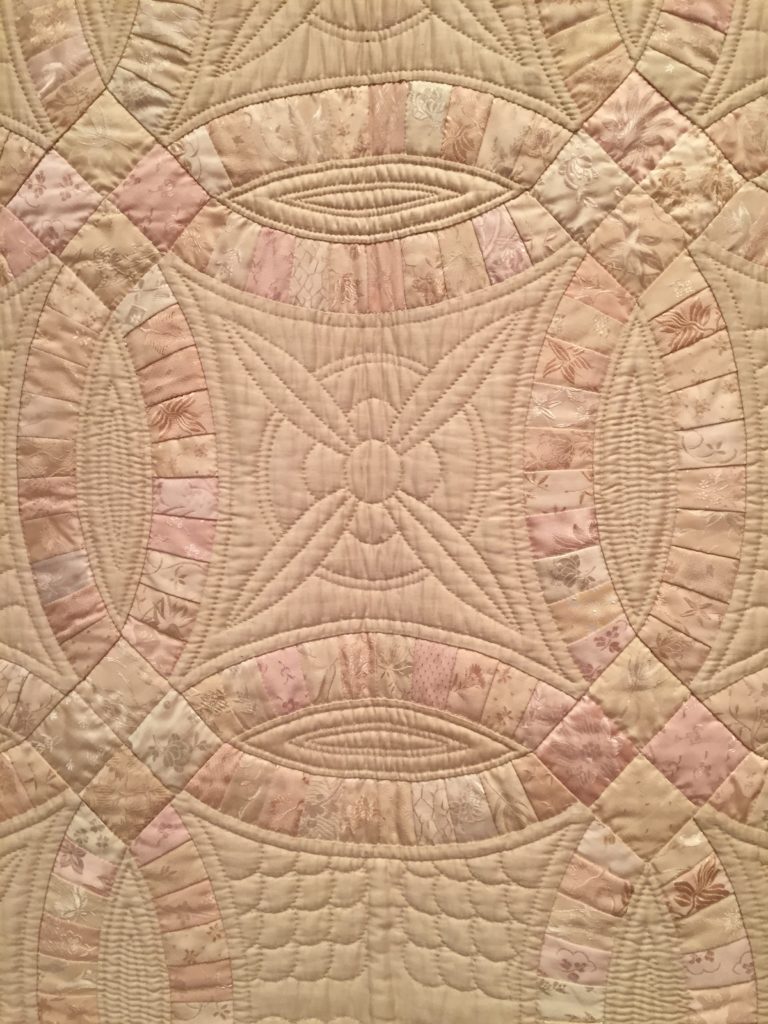 Detail of Double Wedding Ring quilt made using sample books for undergarments.
Detail of Double Wedding Ring quilt made using sample books for undergarments.
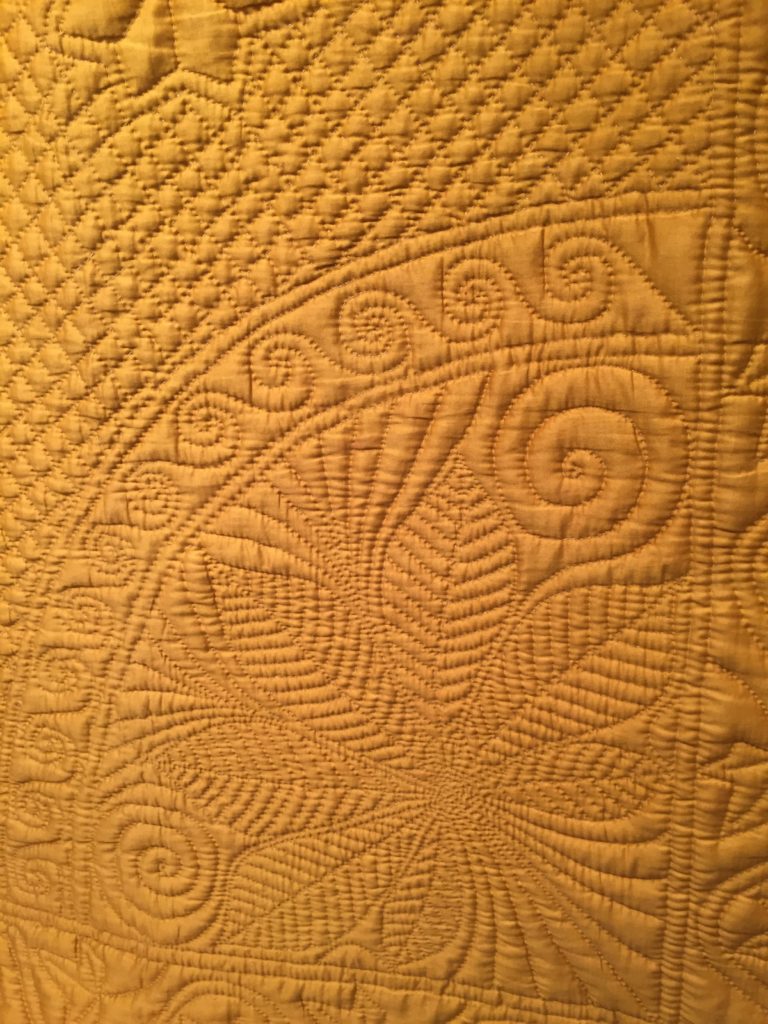 Gold quilt from Gwaen Can Gurwen, c. 1912
Gold quilt from Gwaen Can Gurwen, c. 1912
Ultimately, though, the restrictions on design and demands for perfection are said to have led to a loss of spontenaiety common in earlier Welsh quilts.
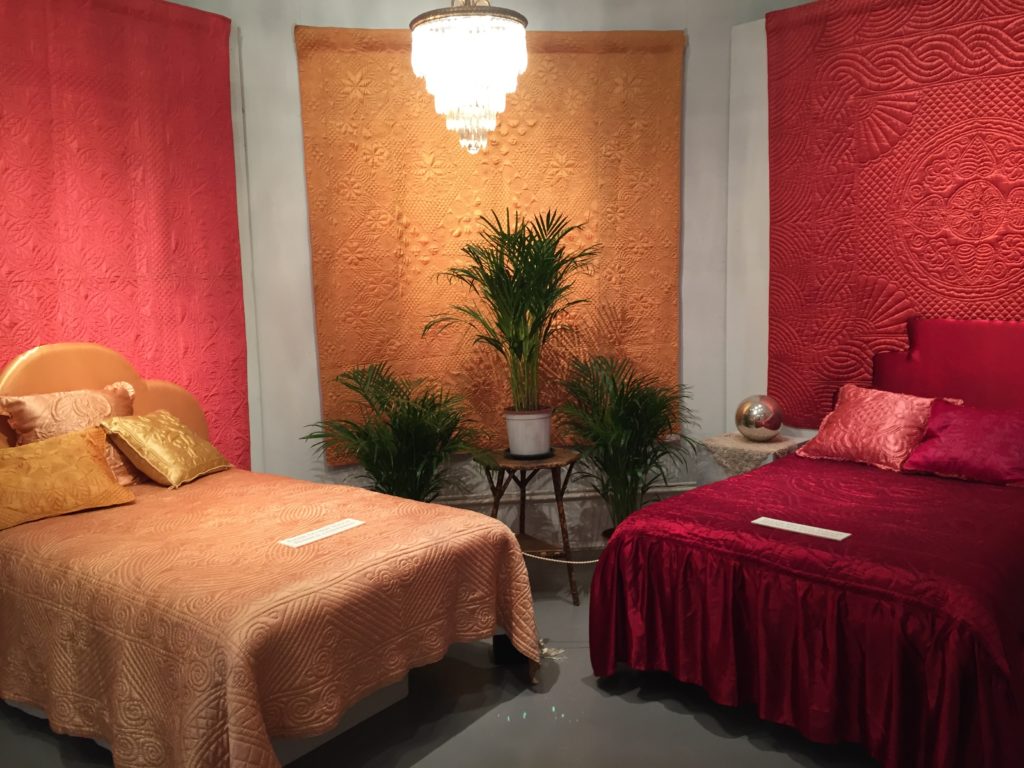
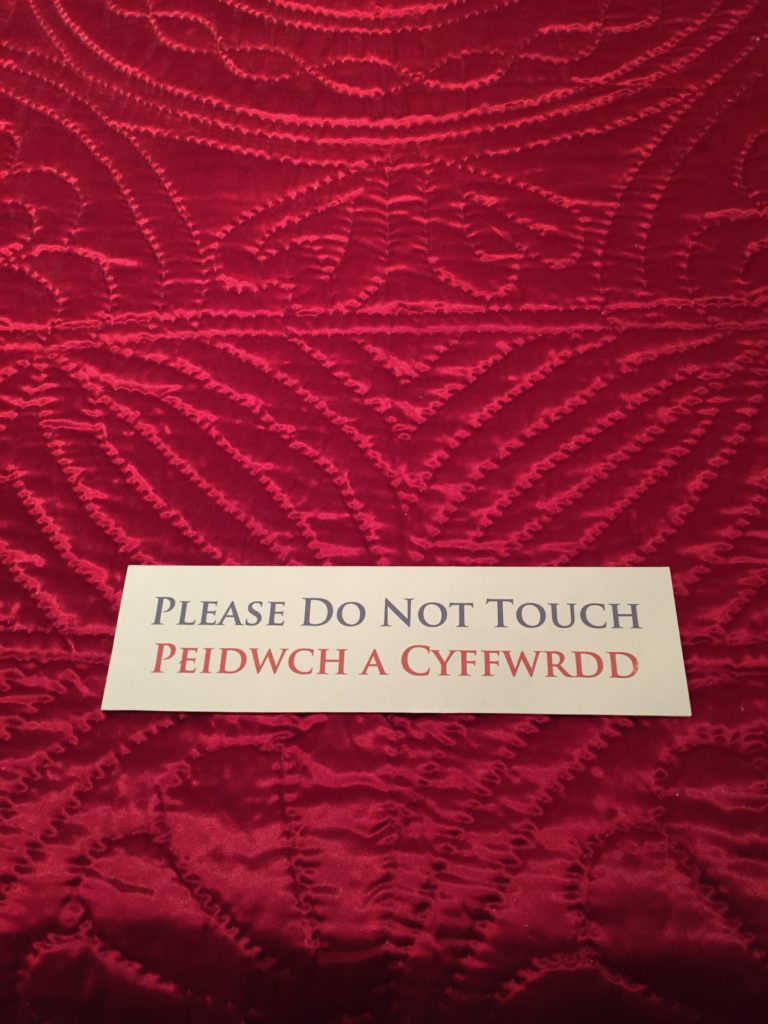 All signs are posted in Welsh and English
All signs are posted in Welsh and English
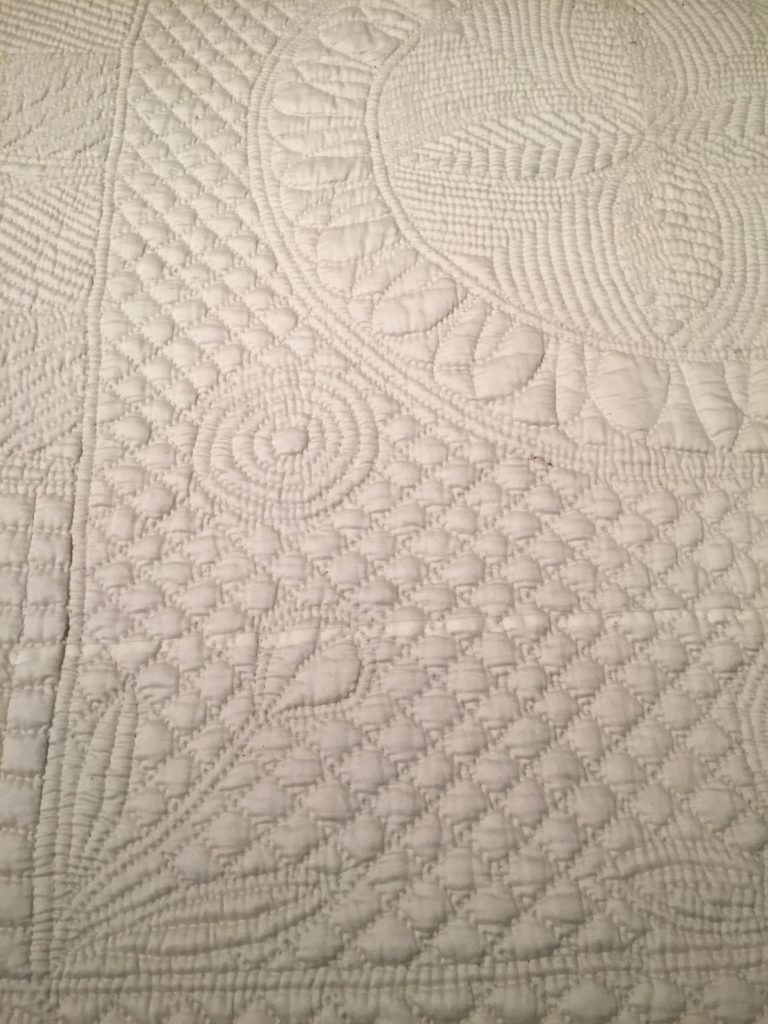
The Welsh Center also hosts exhibitions in two smaller galleries, as well as three workshops each year. The Musuem is on hiatus from mid-November til May—check the website for details before venturing to Lampeter. (Though the galleries are closed, the museum is currently hosting a holiday sale.). Information about some of the exhibitions for 2018 can be found here.
Have you ever been to the Welsh Quilt Centre, or seen quilts at another international venue? We’d love to hear about it!

Comments